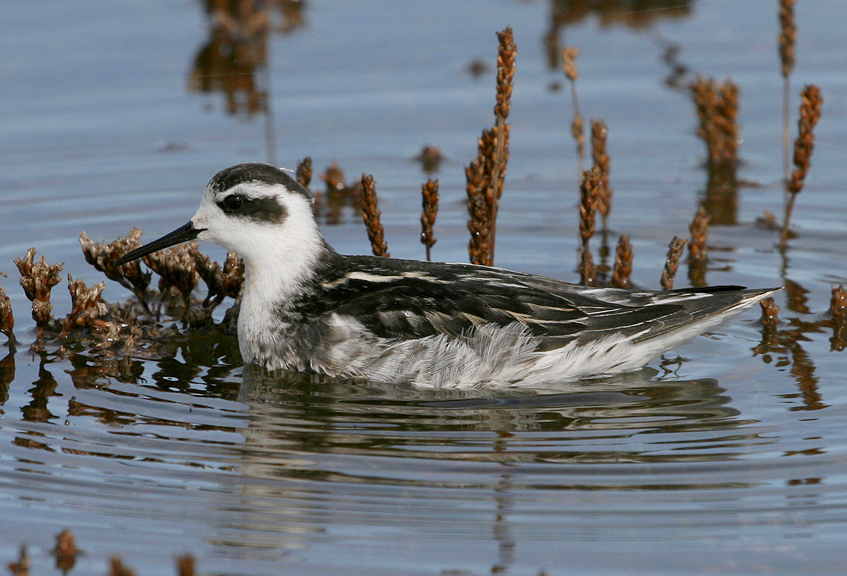Red-necked Phalarope Phalaropus lobatus
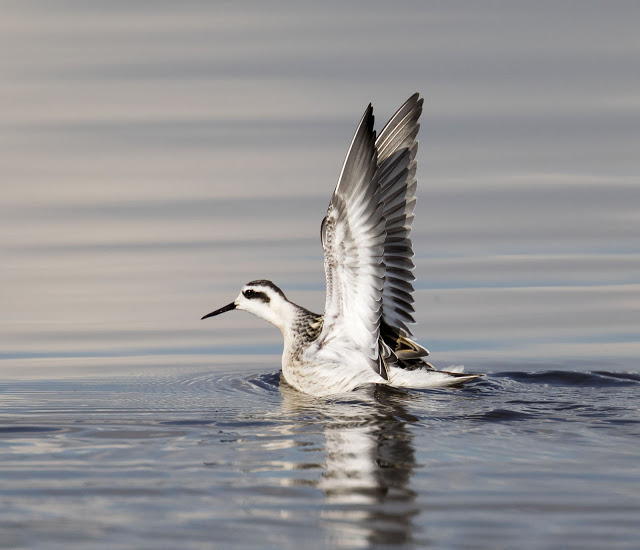
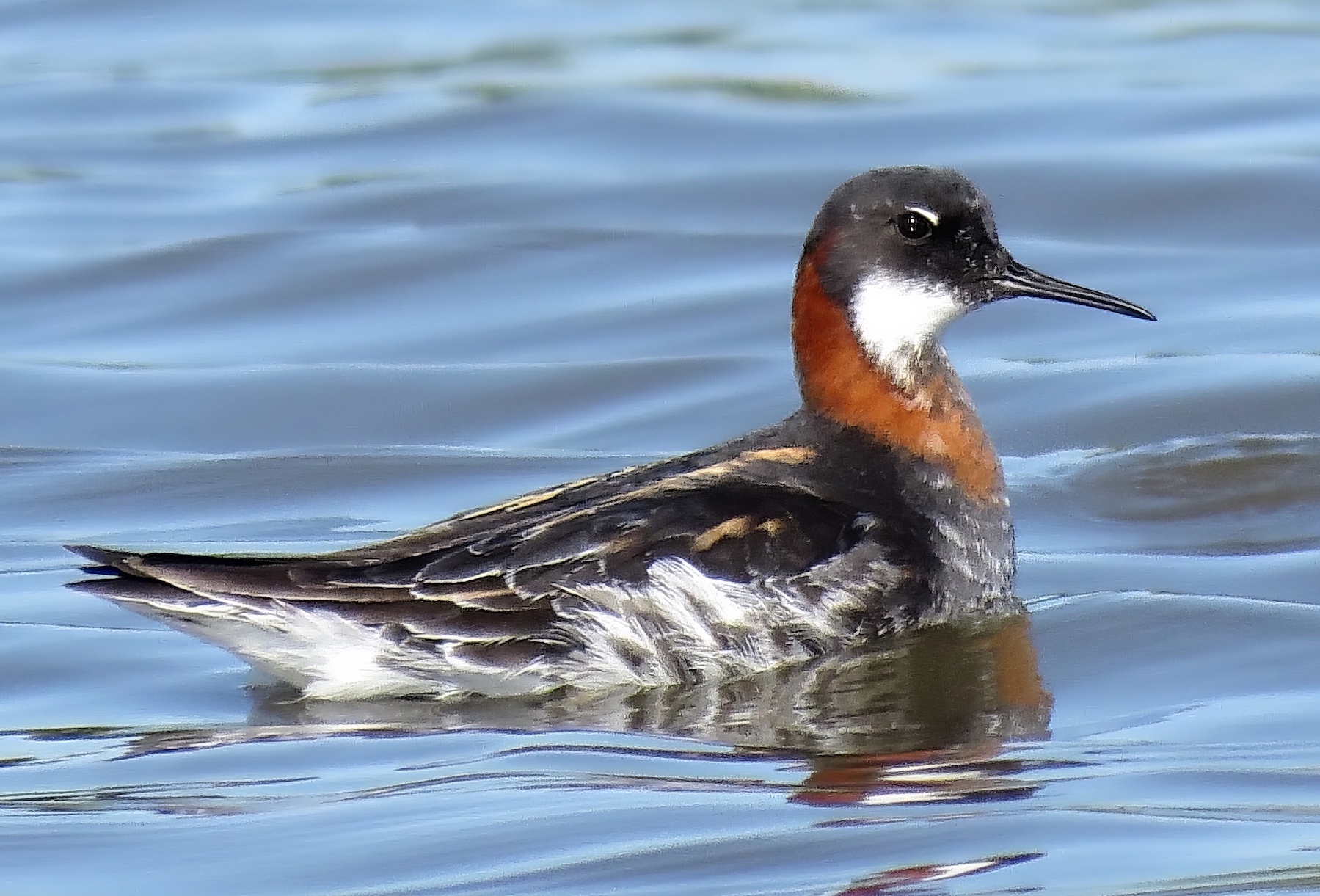
Red-necked Phalaropes: left, Gibraltar Point September 30th 2007 (Neil Smith); centre, Alkborough Flats on October 1st 2017 (Graham Catley);
right, West Ashby May 20th 2018 (Roy Harvey).
Lorand and Atkin (1989) report that there were 18 records between 1850 and 1934, mainly on the north-east coast in September and October. The next was not until 1956 but about 50 occurred from then until 1988. We do not currently have details of all those before 1979, including the first record. The charts summarise occurrence of Red-necked Phalaropes from 1979 to 2016. The annual average over the whole period was 1.6 birds per year. They do seem to have become more frequent from 2007 onwards, with the annual average during 2007-2016 being 3.0 whereas that for 1979-2006 was 1.1. It seems likely that this change is due less to shifting trends in population size or migration patterns than to the likelihood of birds being seen. Perhaps significantly, the more frequent occurrence coincides with the existence of the rich wetlands of Frampton Marsh RSPB reserve, where over half of those since 2007 have been seen. The number of records by decade is as follows: 1980-89 (14), 1990-99 (13), 2000-09 (10), 2010-19 (41). The last 10 years had peaks of 7 in 2015 and 2018, and 8 in 2017. These 41 records occurred at the following sites: Frampton Marsh (24), Gibraltar Point (4), Middlemarsh Farm (3), Covenham Reservoir (2), Saltfleetby-Theddlethorpe (2), West Ashby (2). Four other sites had singles. Records occurred from May 3rd to Nov 17th and showed virtual parity between spring (19) and autumn (22) suggesting a recent propensity for more spring birds.
Analysis of records from the period 1979-2016 is illustrative of the patterns of occurrence and shows that 38 out of 60 birds were found in the second half of the year. Including all records for which we have full details (including some before 1979), the pattern is similar: about one third of individuals have occurred in spring. The extreme dates during that season range from 5th May to 30th June. The earliest of all was one at Frampton Marsh on May 5th 2011. Autumn records fall mainly between July 30th and October 7th but there have been a few earlier in July, including one at Wisbech sewage farm on July 18th 1968, and a few later, including one at Donna Nook on November 18th 1966. Two were seen together at Middlemarsh Farm, near Skegness, on June 20th 2015, but all other records have been of single birds. Most autumn birds are juveniles; in fact, in the recent period, only one definite adult has been recorded in autumn, at Frampton Marsh on September 1st 2012, though some birds have not been aged. Around half of individuals are seen on single dates but a few stay a week or more, with the longest stay being 14 days by a first summer bird at Frampton Marsh during August 18th-31st 2012. Just over one third of individuals (23 out of 60) of those seen during 1979-2016 were along the coast from Humberston to Gibraltar Point, with the latter site accounting for eight birds. Almost one third (19 out of 60) were at inland sites, including three at Bardney Pits and six at Covenham Reservoir. Thirteen were in The Wash, three of them at Freiston Shore and 13 at Frampton Marsh. Surprisingly few (just two) were on the Humber, with none at Alkborough Flats. In the most recent period, 2017-2020, there were eight in 2017 (Frampton Marsh five; Covenham Reservoir two; Alkborough Flats one); eight in 2018 (Frampton Marsh six; Gibraltar Point ine; West Ashby one); five in 2019 ( Frampton Marsh two; Freiston Shore one; Gibraltar Point one; Middlemarsh Farm one). Surprisingly, there were no records in 2020.
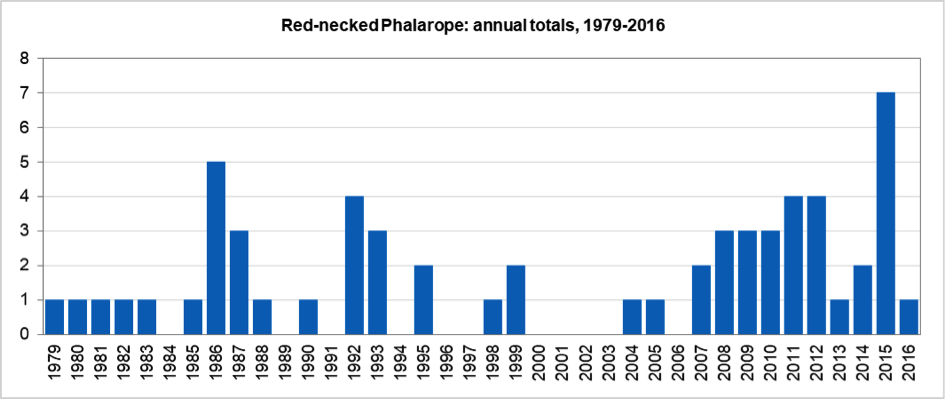
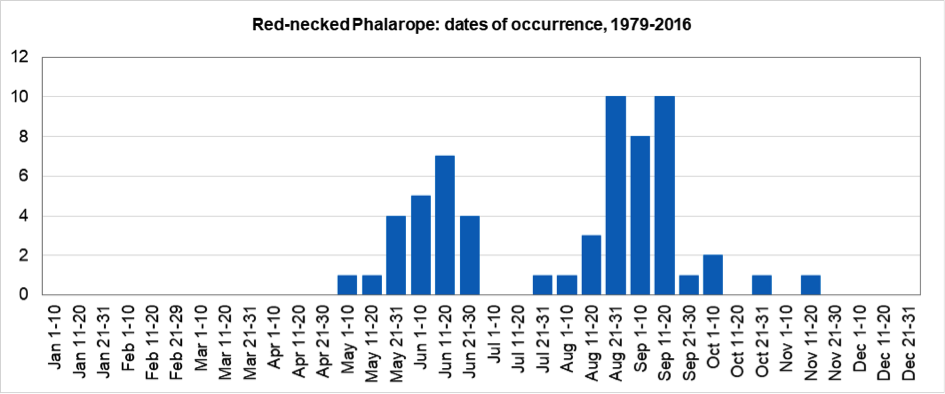
(Account prepared January 2018; updated as per new Birds of Lincolnshire (2021), included September 2022))


